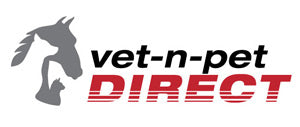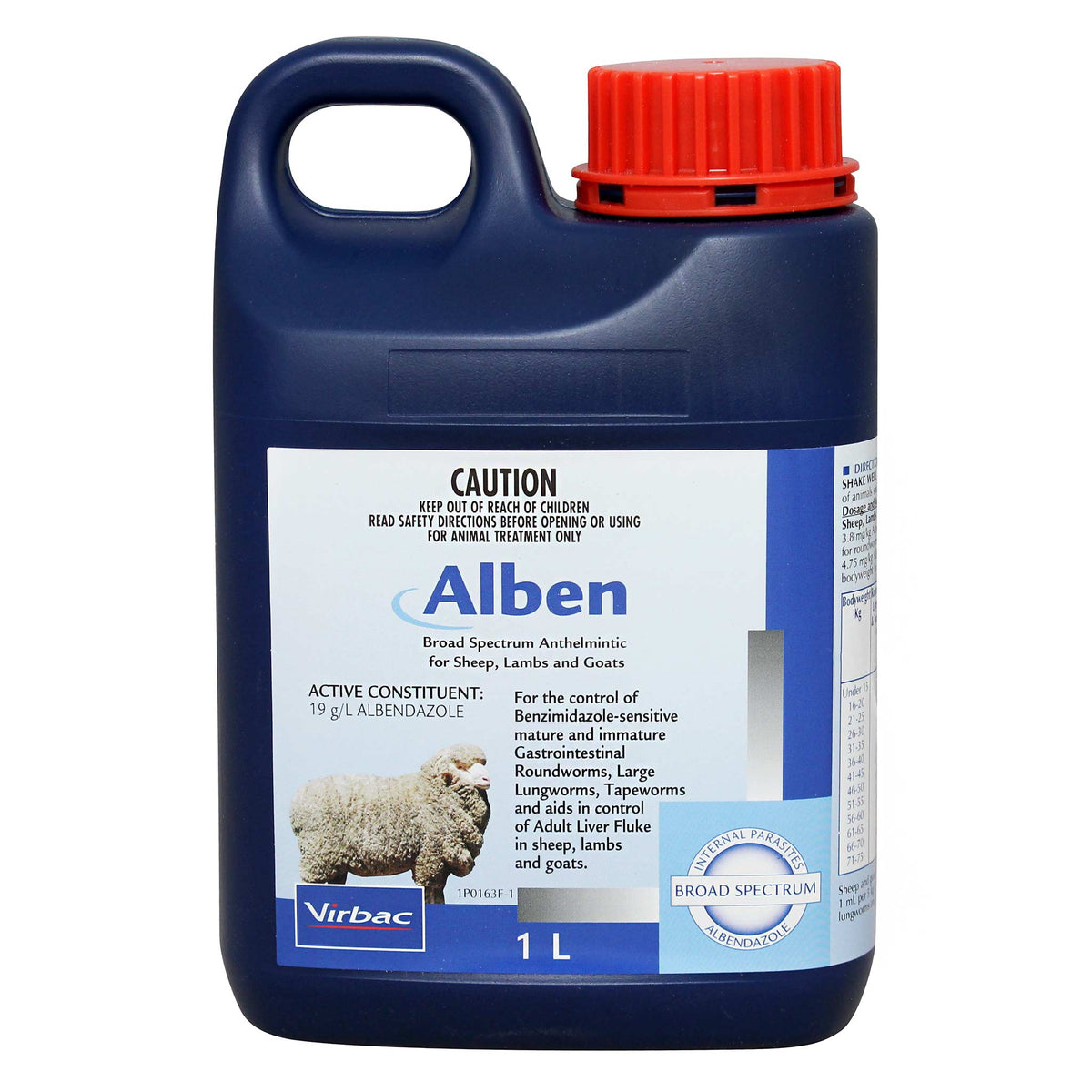Virbac Alben is for the control of benzimidazole-sensitive mature and immature gastrointestinal roundworms, large lungworms, tapeworms and aids in the control of adult liver fluke in sheep, lambs and goats.
Virbac Alben contains albendazole, a member of the benzimidazole (BZ) or 'white' family of drenches.
Features of Alben:
- Broad spectrum worm control
- Short acting
- Registered for goats
- Very safe
- Ovicidal
Why choose Alben?
1. For your white drench rotation:
Alben contains albendazole, a member of the benzimidazole (BZ or white) drench family. If white drenches are still effective on your property, Alben provides an opportunity to rotate away from macrocyclic lactone (ML) or levamisole (clear) drenches.
2. Broad spectum worm control:
Alben will control all major roundworms that are susceptible to a BZ drench (except whipworms). These worms reduce overall productivity especially in young animals. Weight gains can be affected significantly. Alben also controls tapeworms and aids in the control of adult liver fluke.
3. Registered for goats:
There are very few drenches registered for use in goats. Alben has been used safely by goat producers across Australia for many years, and continues to be one of the more popular drenches used in the goat industry.
4. Very safe:
Albendazole is amongst the safest of all active ingredients used in oral drench formulations.
5. Ovicidal:
Albendazole is ovicidal, ensuring that roundworm eggs passed in the dung are rendered infertile, reducing the potential for further pasture contamination. To obtain the maximum benefit of this, sheep and goats should not be placed on clean pasture until 12 hours after drenching.
When to use Alben.
1. When rotating to a white drench. It is important to use effective drenches on your property. If white drenches still give effective control on your property, then Alben is a useful tool to extend the life of the more powerful drenches available, including the macrocyclic lactone (ML) drenches (e.g. Cydectin Oral Drench for Sheep).
2. In combination with other drenches. Drenching with a combination of actives from different drench families provide the best tool to fight resistance in worms. Producers wanting a cheap alternative to combination drenches could use an ML such as Cydectin Oral and then follow this immediately with a dose of Alben.
3. Worm testing. Worm egg counts provide valuable information to optimise drench timing. Egg counts will show if a drench is not required because of low worm numbers, but will also reveal production limiting worm infections long before clinical signs such as scouring or wasting are evident. A larval differentiation assay provides identification of the worm species present so that the optimal type of drench can be selected.
4. Drench resistance testing. It is essential to understand the level of resistance to the various drench families on a particular property. Faecal egg count reduction tests (FECRTs) provide objective measurements of which drenches are working and which fall below the level of efficacy required for good worm control (i.e. 95% efficacy). FECRTs should be conducted every two to three years to monitor any changes in resistance levels.
How to use Alben:
Alben is applied orally using standard drenching equipment. Shake well before use. Dose the mob according to the heaviest animal by bodyweight in the group (ewes, wethers, rams, lambs). Where there is a large variation in size within the group, draft into two or more lines based on bodyweight. A representative sample of the animals should be weighed before treatment. Do not underdose. Do not drench in marking cradles due to the increased risk of aspiration into the lungs. Check the accuracy of drenching equipment before and during use.
COMPOSITION:
Albendazole 19g/L
DOSAGE: Alben is given orally at the recommended dose rate of 1mL/5kg
bodyweight for the control of roundworms and tapeworms.
WITHHOLDING PERIODS/ESI:
Meat: 10 days
Milk: Do not use in dairy animals which are producing or will in the future produce milk for human consumption or processing.
ESI: 10 days
SIZE: 1L


















